Welcome to join our Yangtze River Cruise Tour! Many resorts deserve your exploration along the way such as The Three Gorges, Leshan Giant Buddha, and Mount Emei. Yangtze River Tour will provide you with a fantastic visual and taste experience that makes you entranced for many days. Don’t hesitate! All you have to do is to join us by choosing this exciting cruise tour!

Welcome to Beijing! Your guide will wait for you at the airport with your name sign at hand, then transfer you to a hotel in the downtown area and help you to check in. You can arrange your time freely after arriving at the hotel or just have a rest at the hotel.
As the first stop of our Yangtze River Tour, Beijing is an international metropolis that deserves a detailed introduction. So join us and explore Beijing together! Beijing, the capital of China, covers more than 16,000 square kilometers with a population of some 22,000,000. It is an ancient capital that can be dated back to about 3,000 years ago, and a total of ten dynasties made Beijing their capital. Influenced by its monsoon climate and location, Beijing has a short spring and autumn. It is worth noting that Beijing is famous for its long history and diverse cultures such as religion, food and drink, and architecture, which will make you enjoy yourself so much as to forget to go home.
Free Time Suggestion 1:You can visit Wangfujing Street at night, a well-known pedestrian street that attracts millions of visitors. Being renowned as “Golden Street”, Wangfujing is hundreds of years old, but it is still a great tourist attraction because of its splendor of malls, diverse products, and beautiful scenery. Wangfujing Street is characterized by its combination of tradition and fashion. The street accommodates ancient commercial civilization with a number of Chinese time-honored brands; it also attracts foreign cultures, converging many famous brands of multinational firms. So you can buy both luxury goods and regular merchandise here.
Free Time Suggestion 2: You can also visit Sanlitun Bar Street at night. Sanlitun Bar Street, which is the most bustling entertainment street of Beijing, attracting many visitors to relax. Many bars such as CLUB MIX, Destination, and Trinity Club can provide you with a quiet and comfortable atmosphere so that you can relax and enjoy leisure with your friends.
After breakfast, you will visit Tian’anmen Square, a place where Chinese people hold great ceremonies. Located in the south of the Palace Museum, Tian’anmen Square covers an area of 4,800 square meters and stands opposite the Tian’anmen Rostrum. There are several widely known attractions on Tian’anmen Square such as the Great Hall of the People, Monument to the People’s Heroes, and National Museum of China. As the largest monument in Chinese history, the Monument to the People’s Heroes consists of 17,000 granites and white marbles, which involved hundreds of people to mine and transfer. There are ten huge reliefs, which are made from white marbles, are embedded on the monument. These reliefs vividly show about twenty heroes in Chinese history by carving the different appearances, personalities, gestures, and emotions of these heroes. The ten reliefs described Chinese modern history in length. Being regarded as a rarely complete granite in Chinese architecture history, a huge granite core stone forms the main body of the monument. Do you know how people mined and transferred the huge granite? It is recorded that people exploded a massif for several months to mine the stone. Then thousands of people were involved in the transportation of the stone through grooves. After the building of the monument, many monuments were also built modeled after the Monument to the People’s Heroes.
After visiting Tian’anmen Square, you will visit the Forbidden City (closed on Monday). Modeled after the Forbidden City of Nanjing, the capital of Jiangsu Province, the Forbidden City (the Palace Museum) is a place that accommodated twenty-four Chinese emperors and their families. The architectural complex of the Forbidden City can be divided into two parts, namely, the outer court and the inner court. The outer court comprises three main royal halls, the Hall of Supreme Harmony, the Hall of Central Harmony, and the Hall of Preserving Harmony, which were used to hold great national ceremonies. The inner court also consists of three palaces, Qianqing Gong (Hall of Heavenly Purity), Kunning Gong (Hall of Earthly Tranquility), and Jiaotai Dian (Hall of Union), which were used to accommodate empresses and concubines. It is said that birds can not flock together on the roof of the Forbidden City. So why does that happen? The glazed tiles in the Forbidden City are very slippery, so it is difficult for birds to fly on. On the other hand, given people’s desire to protect buildings in the Forbidden City, the roofs of Forbidden City have high ridges, even higher than those of normal quadrangle dwellings, so it is tougher for birds to stand on. Many other mysterious stories deserve your exploration about the Forbidden City, so come and join us! Also, you can post pictures about the Forbidden City on Facebook or Twitter to amaze your friends and families!
After lunch, you will visit the Temple of Heaven, where emperors pray for more harvests and a prosperous country. Located in the southeast of the Hall of Prayer for Good Harvests, there are seven stones strictly lined according to the position of the Big Dipper. But if you count carefully, you will find that there are eight stones. So why does that happen? First, let us figure out why people put the Seven Star Stones in the Temple of Heaven. Legend has it that one emperor, Zhu Di, in the Ming Dynasty (1368-1683) wanted to find a place for prayer. One night, he dreamed that the gate of heaven was open and seven meteorites fell on the ground where he chose to build the Temple of Heaven. Then he also put seven stones in the Temple of Heaven. However, the truth is that ancient people have realized the importance of the Big Dipper and positioned the seven stars here. Then why are there eight stones? The ancients noticed a dark star beside the Big Dipper and named it a “concomitant star”. After careful observation, people find that the ancients’ observations were very correct. The Big Dipper has eight stars, so people put the eighth stone to the Temple of Heaven.
After visiting the Temple of Heaven, you will have a sightseeing of the Summer Palace, a royal garden in the Qing Dynasty (1636-1912). After coming to the throne, Emperor Qianlong built four large royal gardens. To show his filial piety, he allocated a great deal of money to build a garden for his mother and named it Qingyi Garden.
The garden was severely damaged in 1860, and then in 1888, Emperor Guangxu rebuilt the garden and changed its name to Summer Palace. Huazhongyou is one of the symbolic building complexes in the Summer Palace. The buildings of Huazhongyou were built on a mountain, one of which is a two-story attic flanked by another two attics named “Aishan” (love mountains) and “Jieqiu” (borrow autumn), providing an imposing landscape. Other attics, towers, and pavilions were built in line with the contours of the mountain and were surrounded by bamboos and forests.
Option: You can visit Red Theatre at night if you are interested in Kung Fu. The Legend of Kung Fu Show usually begins at 19:30, 1.5 hours per performance. But the theatre will give an additional performance at 17:15 in peak season.
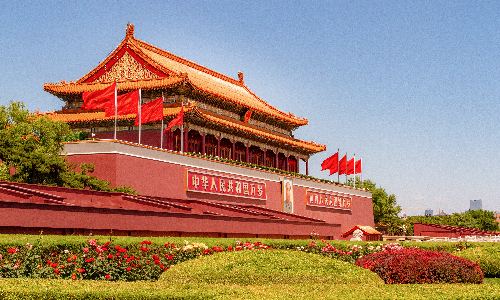

After breakfast, you will visit Ding Tomb, which is the tomb of Emperor Shenzong, Zhu Yijun, in the Ming Dynasty and his two empresses. Ding Tomb is located 60 kilometers northwest of Beijing city, and it will take you about an hour and fifteen minutes by car. Zhu Yijun is the thirteenth emperor of the Ming Dynasty, and he acceded to the throne at the age of ten and occupied it for 48 years, becoming the longest-reigning emperor in the Ming Dynasty. During his reign, Shenzong adopted a series of reforms for economic development and helped the country prosper. Although Shenzong made some achievements in governing the country, it is recorded that he did not hold court for twenty years. You may wonder why Shenzong did not hold court for such a long time. Here is the reason. It is said that Shenzong preferred one of his concubines to his empress, so he was inclined to help the concubine’s son to succeed to the throne. But his recommendation was strongly opposed by his ministers. From Shenzong’s perspective, as an emperor, he couldn’t follow his bent, which made him frustrated. To show his resolution, Shenzong did not hold the court anymore. His dying wish was to be laid to rest beside his concubine, but his dying wish was opposed by his ministers again. Finally, he was buried beside his two empresses.
After lunch, you will visit Badaling Great Wall, playing an important role in China’s ancient defense project, the Great Wall. Badaling Great Wall is the most-visited section of the Great Wall by heads of state and heads of government. In 1957, Badaling Great Wall welcomed the first foreign guest, Voroshilov, chairman of the presidium of the Supreme Soviet of the former Soviet Union. In the following 50 years, it welcomed more than 400 heads of state and well-known politicians such as Nixon, Reagan, Bush, Elizabeth Ⅱ, and Madam Thatcher. There are five iron cannons by the entrance of the Badaling Great Wall, which were one of the most sophisticated weapons at that time. Among them, the biggest one was transferred from Zhang Pu in 1958. The rest of them were excavated in 1957 when people renovated the Great Wall. There are also hundreds of shells, which were made in the Ming Dynasty.
Free Time Suggestion: You can also visit Silk Street at night, which closes at 9:00 if your energy did not drain away. Silk Street has become a landmark since its foundation in 1978. As a Chinese free market and world-renowned commercial street with more than 30 years of history, Silk Street provides you with diverse products such as accessories and silk product with Chinese characters. You can also buy some handbags and bags that are not inferior to luxury goods.
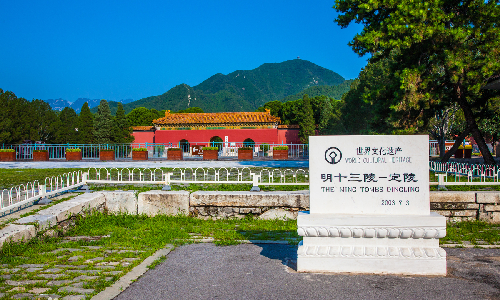

 Xi’an
Xi’an After breakfast, the guide will help you check out and send you to the railway station, and then you will take the estimated train G571 09:22/15:06 to Xi’an. You will have your lunch prepared by the guide on the train. Your next stop Xi’an is one of the best tourist destinations in China. The city covers more than 10,000 square kilometers and has a population of 12,950,000. More than 13 dynasties had established their capital in Xi’an, which left many world-famous attractions such as the Terracotta Army, the Big Wild Goose Pagoda, and the Tang Paradise. Xi’an attracts visitors from all over the world not only because of its historical and cultural attractions but also its delicious food. Such snacks as Biangbiang noodles, dumpling feast, and Rou Jia Mo (Chinese-style burgers) will help you taste more Xi’an flavor. After arriving in Xi’an, the guide will transfer you to the hotel and help you check in, and then you can have a rest.
Free Time Suggestion: You can visit the Grand Tang Mall if you are interested in the culture of the Tang Dynasty (618-902). Being immersed in Tang-style buildings, you will find people who wear Tang-style clothes dancing on the street. Also, you will be surrounded by different kinds of snacks which are divided into several parts, namely, Huaxia food district, Chang’an food district, silk road district, and Internet influencer food district. Walking through the street, you will be overwhelmed by all flavor exuded from Xi’an.
After breakfast, you will visit the Terracotta Warriors and Horses Museum, which is known as the eighth wonder of the world. The museum is located 45 kilometers northeast of Xi’an city, and it will take you an hour and fourteen minutes by car from central Xi’an. As the symbol of Chinese culture, the Terracotta Army attracts more than 2,000 foreign heads of state and hundreds of millions of visitors across the world. There are over 8,000 terracotta warriors in the Terracotta Warriors and Horses Museum, and each of the soldiers has a different appearance, gesture, and emotion, which will amaze you. Moreover, these warriors and horses were colorful when people excavated them at the beginning, but the colors faded away as soon as they were excavated. So, legend has it that the terracotta warriors were fired using real people. Also, the First Emperor of Qin buried many treasures with the dead during his reign. Therefore, people can’t stop but imagining that the soldiers were made with real people. But after the deep exploration by advanced technology, people find that the terracotta warriors and horses are hollow and there is nothing inside them. Some interesting stories also happened to the terracotta warriors. A German pretended to be a terracotta soldier and stood with real terracotta warriors to show his love of them, but finally, the staff found it and drove him away.
After lunch, the guide will lead you to the Big Wild Goose Pagoda. People built the pagoda for the protection of the Buddhist scriptures that master monk Xuanzang took from India. Xuanzang was a remarkable Buddhist monk who lived in the Tang Dynasty. He traveled to ancient India and took Buddhist scriptures back to Chang’an from India. After studying these scriptures, Xuanzang came to realize that he should build a pagoda to translate these scriptures. So he took charge of the building of the Big Wild Goose Pagoda and did the translation of the scriptures there. The old monk passed away in the pagoda after nineteen years of translation. The master monk Xunzang made great contributions to the translation and development of Chinese Buddhism and Buddhist scriptures.
After visiting the Big Wild Goose Pagoda, you will visit City Wall, a landmark of Xi’an city. The City Wall has four main gates, namely, Changle Gate, Yongning Gate, Anding Gate, and Anyuan Gate, which were the original gates of the ancient city wall. It is worth noting that the city wall was surrounded by a city moat that has a history of 600 years. The moat is a man-made river for stopping military attacks and guarding the city. Now people can take a gaily-painted pleasure boat and cruise on the moat to enjoy the imposing landscape provided by this ancient city.
Option: You can visit Tang Dynasty Palace at night to enjoy a wonderful performance of Empress of the Great Tang, and then have a dumpling feast.
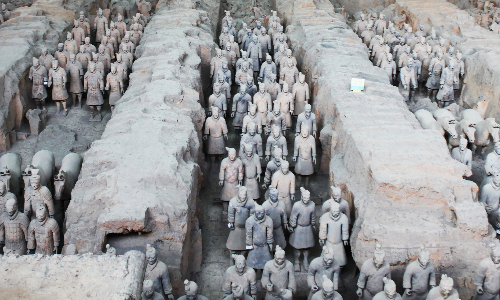

 Chengdu
Chengdu After breakfast, you will take the estimated train G89 11:28/14:38 to Chengdu, the birthplace of the ancient Sichuan civilization. Chengdu is located in the depth of Chengdu Plain with multiple products and advanced agriculture. Chengdu covers more than 14,000 square kilometers and has a population of over 20 million. Being renowned as the “land of abundance”, Chengdu is an indispensable stop of your Yangtze River Cruise Tour. The city also has many places of interest that deserve your exploration such as Dujiangyan Irrigation System, Du Fu Thatched Cottage, and Chengdu Research Base of Giant Panda Breeding.
After lunch, you will visit People’s Park. The People’s Park is a comprehensive garden integrating cultural elements and entertainment. The natural air-conditioning room in the park helps you keep cool in the summer. There are five air-raid shelters in the park that are connected to each other. Walking in an air-raid shelter, you will find different kinds of household appliances such as television and radio, making you feel at home even in the summer. Therefore, the natural air-conditioning room is also a perfect place to keep cool and relax for local people.
After visiting the People’s Park, you will visit Kuan Zhai Alley. The Kuan Zhai Alley is comprised of Kuan Alley (a wide lane), Zhai Alley (a narrow lane), and Jing Alley. The Kuan Alley accommodates many ancient buildings in the late Qing Dynasty and the early Republic of China. The wide lane is a leisure and entertainment district, which is the reappearance of the life of old Chengdu people. The narrow lane is a special district for people who want to experience a slower pace, and it also shows the dwelling culture of old Chengdu. As a combination of Chinese culture and modern flavor, the narrow lane attracts hundreds of millions of youngsters to relax and immerse themselves in a quiet environment.
Option: Chengdu Hot Pot is a good choice if you want to go out for dinner. You can put many ingredients in the Hot Pot such as potatoes, tomatoes, and all kinds of meat. The spicy and tasty flavor will sharpen your appetites.


After breakfast, you will visit Chengdu Research Base of Giant Panda Breeding, where you can see adorable pandas. It is worth noting that pandas move frequently in the morning, so early morning is the best time to observe pandas. They often spend half of their time eating and sleeping during the rest of the day. In the base, panda keepers often feed these cute creatures twice a day, feeding them with bamboo shoots, carrots, and apples. Have you ever seen different pandas with different gestures? Now you can see them in the base. After eating, pandas often place their bodies in various positions. Some pandas sleep on trees; some pandas just lie down and straighten their four legs. Those white and black giant pandas are gentle and lovable, and you can post their pictures on your social media such as Twitter or Facebook. By doing so, you will attract many panda lovers. As shy and gentle creatures, pandas often lower their heads or cover their cute faces with two black and white hands when they first meet people. As the top attraction of the base, pandas draw millions of visitors across the world every day.
After lunch, the guide will lead you to Jinsha Site Museum (closed on Monday), a new landmark of Chengdu. There are a total of 2,235 sets of historical curiosities in the museum such as gold wares, bronze wares, and stone wares. Through years of excavation, the site distribution is scattered over 5 kilometers around. The Jinsha Site Museum comprises four main parts including West Hall, Exhibition Hall, Ebony Forest Hall, and Site-Exhibit Hall. The Site-Exhibit Hall is the place for sacrifice and is the best-preserved sacrifice site that can be dated back to Shang (1600 BC-1046 BC) Dynasty and Zhou (1046 BC - 256 BC) Dynasty. The site is the reappearance of the living environment and religious sacrifice of people who lived in the Jinsha period. Walking in the museum, you will be amazed by various historical curiosities and enjoy a different culture.
After visiting the Jinsha Site Museum, you will visit Jinli Street, a charming place full of tea houses, handicraft workshops, and food stalls that provide you with different delicious food. Jinli Street once was one of the most ancient and commercial streets in the history of Shu civilization (Sichuan is also known as Shu), and now it also serves as a commercial street that combines tourism and entertainment. The nightlife of Jinli Street is more interesting because you can have a cup of tea in a tea house or relax in a bar and enjoy the beautiful voice of bar singers.
Option: You can also visit Shufeng Yayun Sichuan Opera House to enjoy fast-changing face performances that are traditional Chinese techniques.


 Leshan
Leshan Chengdu
Chengdu After breakfast, you will visit Leshan Giant Buddha, which is located 200 kilometers southwest of Chengdu city, and it will take you about 2 hours and 20 minutes by car from the city center. A master named Hai Tong built the giant Buddha for protecting people from shipwreck in flood seasons because people believed that the Buddha would bless them. But something weird also happened in the past few years. The Buddha was built with eyes open, but in the past decades, the Buddha closed his eyes four times. According to local people, the Buddha closed his eyes because he hated to see people suffering. In 1962, people were stricken by starvation and many died of hunger, so the Buddha closed his eyes. In 1963, people failed to overcome starvation, so the Buddha still closed his eyes. In 1976, an earthquake hit Tangshan, Hebei Province, and countless people were homeless by the earthquake, so the Buddha closed his eyes again. The fourth time the Buddha closed his eyes was in 2000. However, after several pieces of research, people found that it was a natural phenomenon. Acid rain corrosion is the cause of this phenomenon.
After lunch, you will visit Huanglongxi Ancient Town. The resort can be divided into three parts that connect by the river including the core attraction zone, sprawling part, and other attractions. The core attraction zone covers more than five square kilometers including ancient dwellings, old trees, ancient temples, and ancient graves. Huanglongxi Ancient Town is not only well-known for its tea culture, water culture, and religious culture, but also for its folk culture, film and television culture, and food culture. Many famous movies were shot in the ancient town such as Zhuo Wenjun and Sima Xiangru. Therefore, the town is also regarded as Chinese Hollywood. After visiting the ancient town, you will be transferred to the hotel in Chengdu.
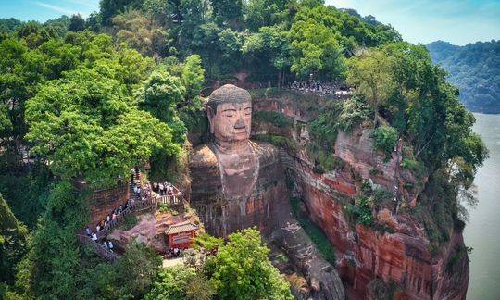
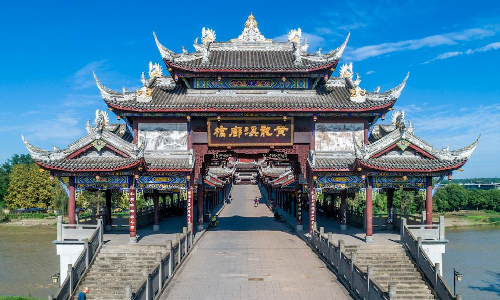
 Chongqing
Chongqing After breakfast, you will be transferred to the railway station and take the estimated train G8607 09:20/10:22 to Chongqing. After arriving in Chongqing, the guide will lead you to Ciqikou Ancient Town. As a symbol and epitome of Chongqing, Ciqikou Ancient Town involves many traditional performances and activities such as Sichuan Opera, temple fairs, and making dough figures, providing you with a special but fantastic experience. Also, you can taste very delicious food here such as Maoxuewang or blood pieces. Blood pieces, a snack with Chongqing’s features, is one of the three best snacks in Ciqikou Ancient Town. People put different ingredients into blood pieces such as special tripes which exude nice smell.
After lunch, the guide will send you to Chaotianmen Wharf, and you will take a Three Gorges Cruise Ship. Chaotianmen Wharf is located 6 kilometers northeast of Chongqing Station, and it will take you 15 minutes to get there. It is worth noting that the pleasure boat usually sails at 21:00, so you are not allowed to embark after 20:30. Taking the Three Gorges cruise ship, you can enjoy the majestic and splendid scenery of the Three Gorges. The cruise ships are equipped with high-level services and rooms so that you can relax and calm yourself down. You can also take part in many activities such as yoga and Tai Chi, or you can just spend your time in a bar or coffee house.


This morning you can wake up naturally and then have a buffet breakfast. You can also participate in Tai Chi or other exercises which are helpful for your health. Drinking a cup of coffee while reading books on board also provides you with a different experience, because you can enjoy the wonderful landscape during reading.
Today you will have a shore excursion which is Shibaozhai Pagoda. Shibaozhai Pagoda is located on the edge of a steep, precipitous cliff, and a precipitous path leads down the cliff. There was no road to the hill before, so people had to make holes in the wall and climbed to the hill like rock climbing today. It was very dangerous! If you climb to the top of the hill, you will find a cave right before your eyes. The cave looks like a closed hell, and people named it Yazidong, or Duck Cave. It is said that the cave was once surrounded by clouds and mist, so people were curious to find out where the cave led to. So, they found a duck, placed a marker on its leg, and put it in the cave. Do you know where people discovered the duck? The duck appeared on the Yangtze River, which shows that the cave is connected with the Yangtze River. Hence people named the cave Duck Cave.
After visiting Shibaozhai Pagoda, you will visit Fengdu Ghost City, which requires an extra fee to visit. Fengdu Ghost City is a cultural and historical city that originated from the Han Dynasty (202 BC - 220AD). Such attractions as Naihe Bridge, a bridge to hell, Huangquan Road, netherworld road, and Guimenguan, the gate of hell, represent Chinese culture about death and the netherworld. It is a special experience to have a close connection with Chinese ghost culture, and you can also talk with your friends about the experience. It is worth noting that you are supposed to pay the extra fee directly to the shipping company on the ship. Your destinations vary according to the attractions you have booked.
There will be a reception at night held by the captain, so you can join and have fun.
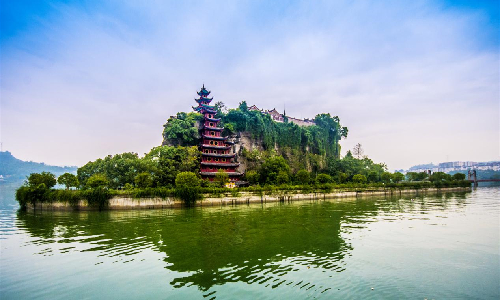
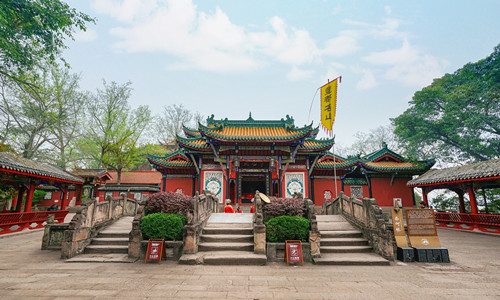
This morning you will also have a buffet breakfast and do morning exercises such as Tai Chi, slow-motion Chinese boxing. Today you will sail through the Three Gorges, namely, Qutang Gorge, Wu Gorge, and Xiling Gorge. Sailing through the Three Gorges, you will be overwhelmed by the imposing landscape of winding mountains, green forests, clear water, and precipitous cliffs. Qutang Gorge is the shortest compared to the other two gorges. Wu Gorge, which stretches for 45 kilometers, is the most majestic gorge among the three. Sailing through the Wu Gorge, you can enjoy a wonderful picture provided by the weird stones, flowers, and grass that are so beautiful and poetic. Xiling Gorge is famous for its turbulent river and it is also the longest in the Three Gorges. You will take a small boat to visit Goddess Stream when you reach the Wu Gorge. The Goddess Stream will provide you with a primitive picture because of its turbulent river and narrow course. The beautiful scenery and residents in the raw attract countless photographers around the world to catch the most primitive charm. So you can also take pictures and share them with your friends.
You will have a buffet lunch today. At night the captain will hold a farewell dinner, and the crew will also give you performances.

 Shanghai
Shanghai After a buffet breakfast this morning, you will visit the Three Gorges Dam Site. The Three Gorges Dam is comprised of two parts including the main structure and diversion project with a total investment of 95.46 billion yuan. The Three Gorges Dam project was first proposed by Sun Yat-sen in 1918 for developing Chinese industries by using science and technology. You may be surprised to find that the project was finally completed in 2009, lasting several decades. Because the project is complex and needs countless inspections, people decided to separate the building process into three stages from 1993 to 2009. After finishing the project, millions of people will not worry about floods that claim countless lives. The Three Gorges Dam is also used for shipping, saving a lot of costs.
Today you will have an additional shore excursion, board sightseeing-ferry sailing through TGP Ship’s elevator. It is worth noting that you are supposed to pay directly to the shipping company on board. After arriving at Yichang Three Gorges Center Cruise Terminal by car, it comes to the end of your Three Gorges Cruise experience. As an exciting part of your Yangtze River Tour, it provides you with a fantastic experience. Then the guide will pick you up at the Yichang Railway Station, and you will take the estimated train D354 14:46/22:21 to Shanghai.
After arriving in Shanghai, the guide will pick you up at the train station, transfer you to the hotel, and help you check in. You may have heard of Shanghai, an international metropolis, before and it also has many traditional buildings and snacks that deserve your exploration. Shanghai, which is located in the east of China, covers more than 6,300 square kilometers and has a population of over 24 million. The city also has many places of interest that attract visitors from all over the world.
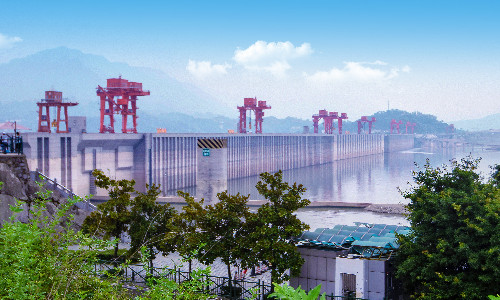

After breakfast, you will visit Yu Garden (closed on Monday). Yu Garden was a private garden of the Ming Dynasty. It was built by an official named Pan Yunduan and designed by Zhang Nanyang who was specialized in building gardens. By the entrance of the Yu Garden, you will notice two iron lions with vivid gestures and appearances. The left one, a male lion, opens its mouth and its eyes are piercingly bright with a ball under its feet. The right one is a female lion with a gentle expression while playing with the baby lion. Walking in the garden, you will also be enchanted by many strange but beautiful sites such as Huge Rockery and Dragon Wall.
After visiting Yu Garden, the guide will lead you to Shanghai Old Street, a street that combines tourism, shopping, entertainment, and culture, so you will have much fun here. The street is full of century-old shops with traditional Chinese characteristics. Walking in the street, you may feel like you are visiting a street in the Republic of China period (1912-1945).
After lunch, your first stop is Shanghai Tower, one of the iconic buildings of Shanghai. The main building has 127 floors above ground and another 5 underground, with a total height of 632 meters. The tower is divided into nine zones with different functions such as sales zone, office zone, hotels, and viewing platforms. You may find that the shape of the tower is a little weird, which looks like a guitar pick. Because Shanghai, located in the east of China, often encounters typhoons, the shape of such a huge building becomes very important, so people design the tower in this shape to withstand typhoons and extreme weather conditions. Standing on the top of the tower, you will be shocked by the scenery of the city because all the iconic buildings of Shanghai will appear in your eyes. It is a good time to take pictures!
Then the guide will lead you to Nanjing Road, the earliest commercial street after the opening of Shanghai Port. Park Hotel is one of the important buildings of Nanjing Road and it has long been recognized as the highest building in the Far East. Significantly, it was invested and operated by a group of Chinese bankers. As the headquarters of Chinese four major banks in northern China, the building is the most famous and grand compared to other banks including HSBC Bank Building.
After visiting Nanjing Road, you will visit The Bund. The Bund is the epitome of the history and culture of Shanghai. After the opening of Shanghai Port, the Bund became home to many foreign banks, shops, newspaper offices, and firms. There are 52 buildings in the area, with different styles, so it is safe to say that the Bund can be an exhibition of international buildings. Many modern iconic buildings such as Oriental Pearl TV Tower, Shanghai Jinmao Tower, and Shanghai World Financial Center are standing here.

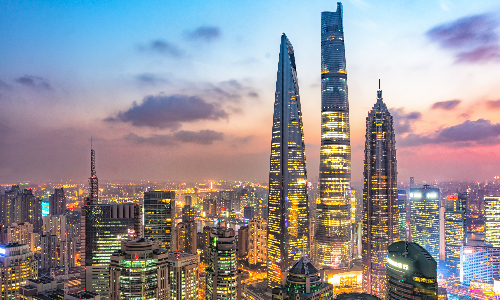
Today your 14-day tour comes to an end. The guide will accompany you to the airport and say goodbye to you. Then you will board your flight back home. We wish you a happy journey!
Author: Ren Jiayi
| City | Five Star hotel list | Four Star hotel list |
|---|---|---|
| Beijing | Sunworld Dynasty Hotel Beijing Wangfujing | Sunworld Hotel Wangfujing |
| Xi'an | Tianyu Gloria Grand Hotel Xi'an | Sunworld Dynasty Hotel |
| Chengdu | Sofitel Chengdu Taihe | Holiday Inn Express Chengdu Jinniu |
| Yangtze River Cruise | Victoria Anna | Victoria Anna |
| Shanghai | Ocean Hotel Shanghai | Courtyard by Marriott Shanghai Central |
 |
![]() About your child or infant, please contact us for a discounted price.
About your child or infant, please contact us for a discounted price.



We started with a few days in Beijing & ended in Shanghai, from where we visited the Forbidden City and Great Wall. In between we visited Terra Cotta Warriors Museum, Panda Base, Shanghai Disneyland.

We had a wonderful holiday in China which will remain long in the memory. China is a breathtakingly beautiful country full of splendid temples and palaces, mountains and rivers, peaceful rural scenes and bustling shopping streets.
 QUICK ENQUIRY
QUICK ENQUIRY